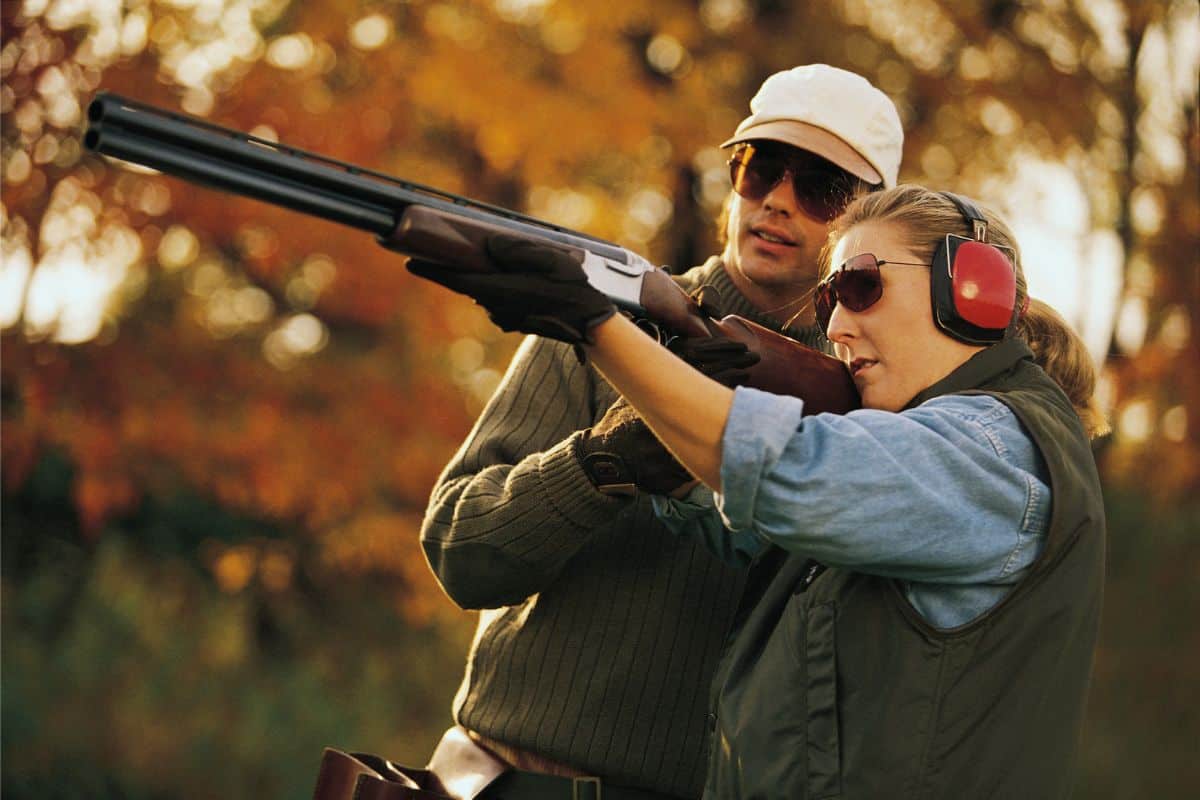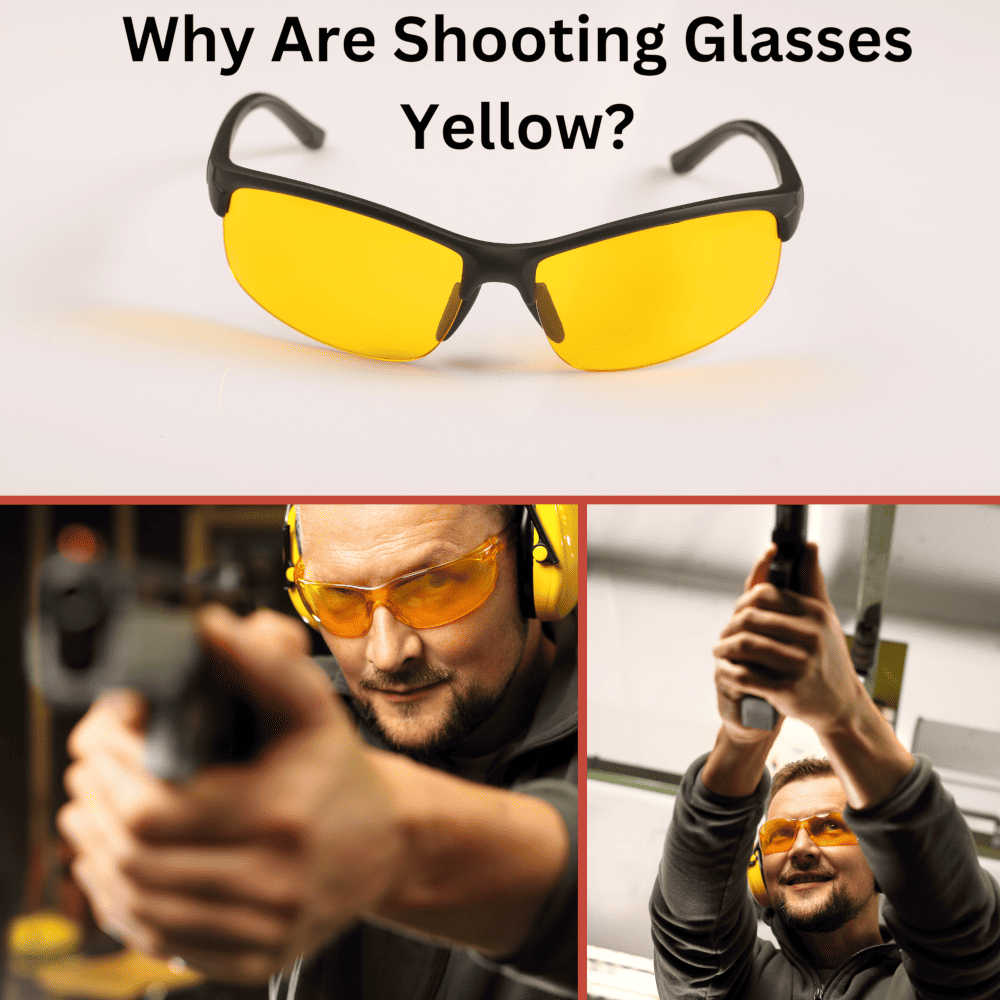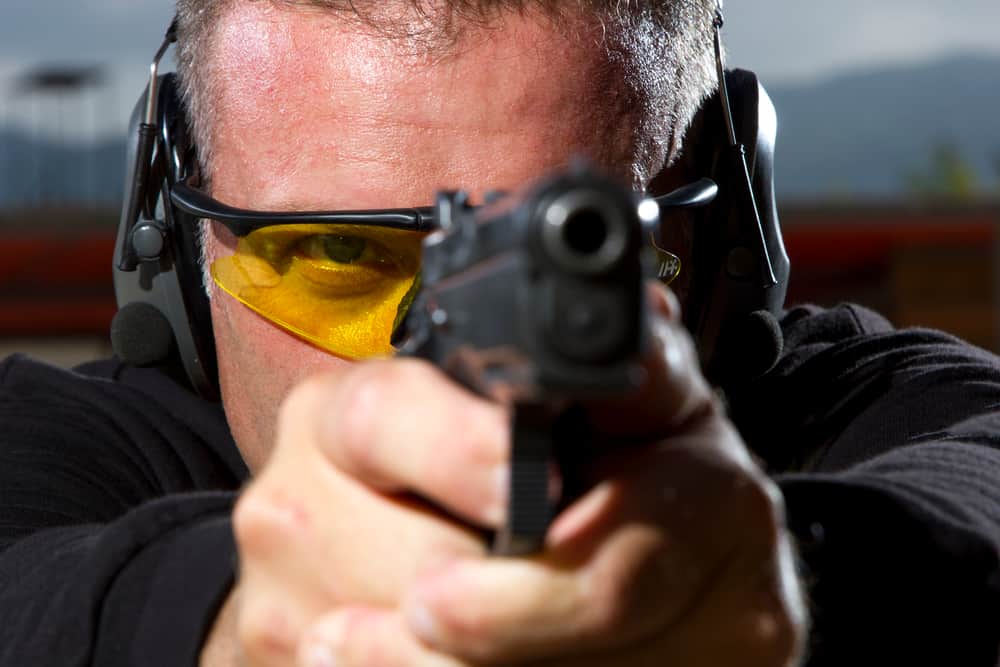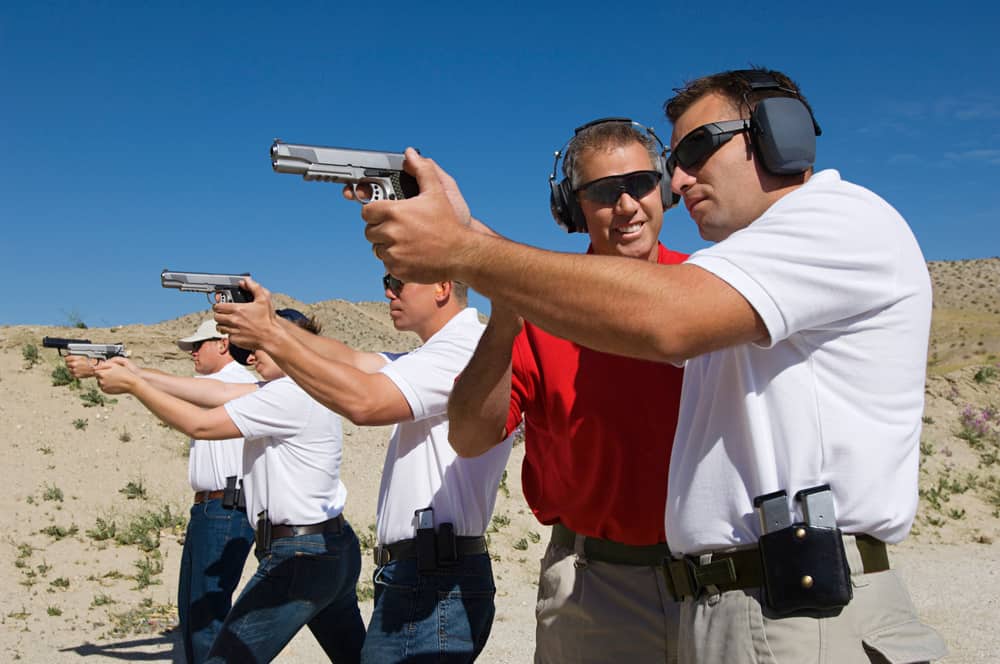Lenses are a core component of shooting glasses, so let’s look at each one of these lens components or features in more detail:
- Lens Material
- Lens Impact Resistance
- Lens UV protection
- Lens color
- Lens Material
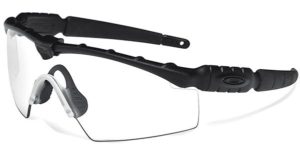
An essential feature to consider. In today’s market, most shooting glasses lens are made from three materials:
- Crown glass
- CR 39 plastic
- Polycarbonate
For shooting glasses, Polycarbonate is one of the best lens materials available on the market today. It weighs less than Crown Glass and has a higher impact resistance rating. Polycarbonate is about the same weight as CR 39 plastic but also has a higher impact resistance rating.
Crown Glass and CR 39 Plastic offer little or no UV protection, while Polycarbonate, even in it’s clear form, provides excellent UV protection.
Polycarbonate is a type of LEXAN® thermoplastic from G.E. and is the same material used for bullet-resistant glass in autos. It’s such a hard material that a special diamond grinding wheel must be used to cut the lens.
To form the lens itself, the material is melted and then force injected into a special mold. In comparison, Polycarbonate lenses are lighter, more durable, more impact-resistant, and more scratch-resistant than any other lens material in today’s market.
Many law enforcement and fire agencies are now making polycarbonate lens standard issue on all protective eyewear. If you want the industry standard, I’d strongly suggest looking at a polycarbonate lens for your shooting glasses.
I’ll also warn you to beware of lower end or less expensive brands of shooting glasses that advertise the lens as being “impact-resistant plastic” or plastic lens marked as”high impact resistance.” In many cases, those plastic lenses won’t meet the basic ANZI impact standards. I’m a firm believer that Polycarbonate is a far superior material over other plastic compounds.
Lens Impact Resistance
In light of the application, this is probably the most important feature to be concerned with. Lens color, fit, etc., are all important, but they become a moot point if the lens won’t properly protect the eye.
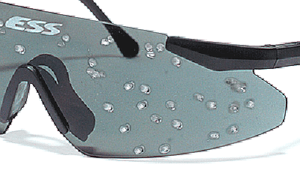
Impact resistance ratings are typically standardized through agencies and groups like Occupational Safety & Health Administration (OHSA), American National Standards Institute (ANSI), and the U.S. Military.
These standardized ratings provide the minimum recommended impact resistance for safety based lens. Some rating information from each group:
- OHSA Safety Standard 1910.133(a)(2) requires impact-resistant lens AND “eye protection that provides side protection when there is a hazard from flying objects.”
- ANSI standards for impact resistance are outlined in article Z87.1 and Z87.3. These standards were provided to ANSI by the American Society of Safety Engineers (ASSE) and specifically focus on eye safety.
- U.S. Military – The U.S. Military uses a testing standard called MIL-V-43511C, a .22 caliber ballistics impact test. U.S. Military eyewear must pass this standard before being issued to any U.S. military personnel.
I’d suggest choosing shooting glasses with lenses that meet or exceed all three standards. If not all three, at least two. As your eyes are so valuable, I wouldn’t recommend taking a chance with any less.
Lens UV protection
Ultraviolet radiation (UV) refers to the low-frequency light waves produced by the sun. There are three forms of UV rays: UVA, UVB, and UVC.

- UVC – The atmosphere filters UV-C, so it is not a real concern.
- UVA – The cause of sun-related drug reactions.
- UVB – This type of UV is responsible for sunburn, prolonged eye damage, and most forms of sun-related skin cancers. It can penetrate thin cloud layers and up to three feet of water. This is the one that will do the greatest damage to the eyes.
To provide adequate protection, look for shooting glasses that absorb at least 99% of UV radiation. Choose shooting glasses with one of the following labels:
- “Blocks 99% or 100% of UV rays”
- “UV absorption up to 400nm”
- “meets ANSI UV requirements.”
Any shooting glasses lens rating less than 99% or 400nm probably won’t provide adequate UV protection. It should be noted that even a clear Polycarbonate lens will block or absorb UV rays, so don’t become focused on the tint as playing a role in the level of protection. Here’s some more in-depth information about UV protection for the eyes.
Shooting Glasses Lens Color
This really comes down to personal preferences. Today, Lens for shooting glasses come in a wide range of colors, from dark gray or smoke to amber to purple.
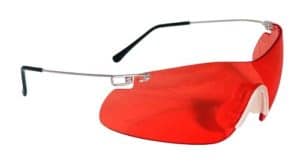
Some info on specific colors:
Smoke, Gray, and Gray-Green tints
The most common type of lens color. They are effective at blocking glare without changing color perception, making them a good choice for all-weather use. Gray is a neutral, or “true,” color that allows the wearer to see all colors as they are. Gray shooting lenses do not enhance the target, but they are good in bright sunlight.
Amber-Brown lens tints
Especially good at blocking the blue light commonly found in diffused light, such as one might experience on a cloudy day. Amber can improve both contrast and depth perception and is a good all-around choice for shooting or hunting.
Yellow or Orange tints
Improve contrast and give a sensation of heightened visual acuity. So-called “Driving” lenses are usually amber or yellow-brown. Lenses in these hues block haze and blue light and enhance the orange color of the target. The brighter yellow the lens color is, the better it is for use at night.
Purple-Vermillion tints
A light purple color, which is actually a combination of a neutral gray and a vermilion, is good for enhancing the target’s orange against a background of tall trees. Vermilion itself is useful to highlight conditions where there is a distorted background, such as trees, and to enhance the target against the background. If you haven’t shot with purple or vermillion tint glasses, it does take some getting used to.
Many shooting glasses manufacturers are now offering glasses with interchangeable lenses. Some manufacturers are now offering glasses packages that come standard with a set of 3 different colored lenses. If you’re interested in having different lens color options, I’d recommend that you take a look at this option, as you’ll be able to get a lens set of colors/tints to meet the needs of most lighting and atmospheric conditions encountered. I’ll make some specific shooting glasses recommendations later in the site.
Here are some frequently asked questions that I see and hear about shooting glasses lenses:
What the best color for shooting glasses?
Assuming that the question is geared towards the color of the lens on the shooting glasses, there really is no one “best” color. When I’m shooting in direct sunlight or on a bright day, I prefer darker tinted lenses.
On overcast days, I usually switch over to yellow or amber-colored lenses as they seem to help me pick up the target better.
I’ve tried the vermilion colored lenses, but they don’t really seem to do much for me personally. However, I have buddies who shoot trap and skeet and swear by that color.
My best advice is to try out a few different colors and see what suits you the best for your shooting needs.
Why yellow shooting glasses?
The idea behind yellow or yellow-orange lenses for shooting glasses is the concept that colors in those tints increase the amount of contrast seen by the naked eye and enhance visual acuity. You can read more about the research into the technical aspects here.
What about vermillion lens shooting glasses?
Vermillion is one of those colors that has a wide range of appearances. It can be a dark red or also appear as a cross between red and purple. Vermillion colored shooting glasses lenses can be useful in situations where you need to enhance a target against an irregular background. Vermillion based lenses seem to be a popular option for trapshooting, general target shooting, and skeet shooters.
What’s the best color glasses for trap shooting?
First, it’s important to understand that no one lens color is the “best” for trap shooting as you may be shooting under different conditions, such as outdoor versus indoor matches or an outdoor match with a bright sunny day versus a cloudy, overcast day.
One particular lens color won’t be absolutely ideal for all of those scenarios, which is why most veteran trap shooters use more than one pair of shooting glasses with different lens color configurations.
Color is made up of a combination of colors, with each color traveling at a different wavelength. For example, the color we interpret as red is a longer wavelength than light blue, which is a shorter wavelength.
Colored lenses can filter out which of the color wavelengths are blocked and which ones are enhanced. For example, an orange-tinted lens will block out most of the wavelength colors that are shorter than orange (yellow, green, blue, etc.), enhancing the orange of a clay target. In and of itself, that would seem like a good thing, but the orange lens can also interfere with the normal contrast that a shooter might see as the clay target moves against a lighter background like a treeline with green leaves.
Although I don’t shoot much trap these days, when I was a more active trap shooter, I preferred a medium yellow lens color as I always felt that it made the orange clay target seem brighter but also offered enough contrast for the clay target to be seen against almost any background.
However, your own mileage may vary, which is why I’d suggest trying a few different lens colors and seeing what works best for you.

